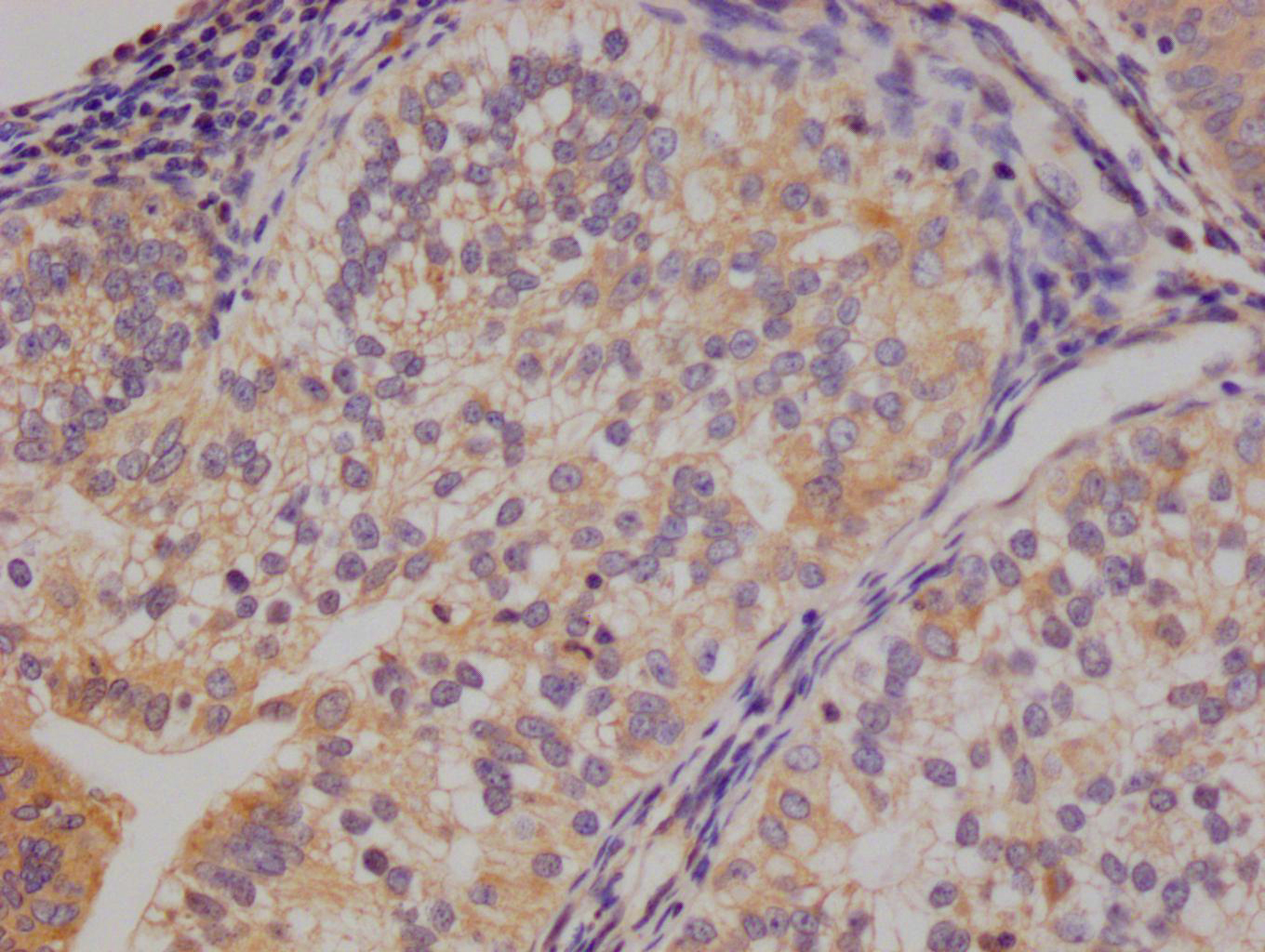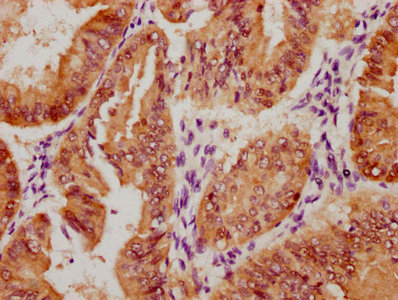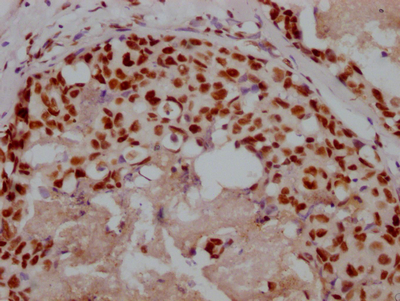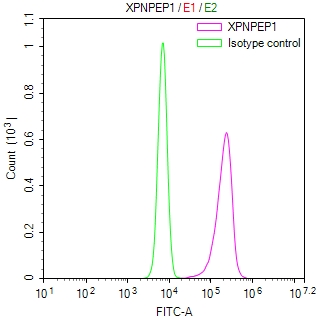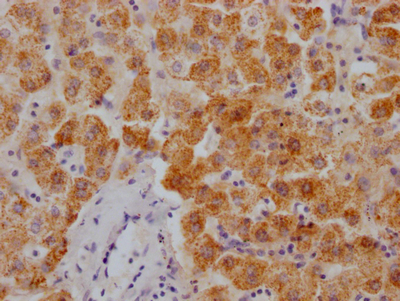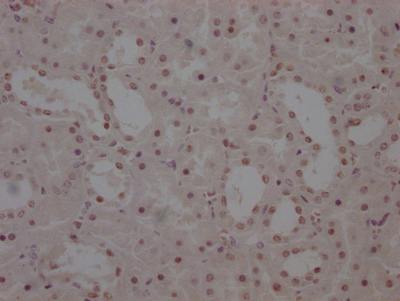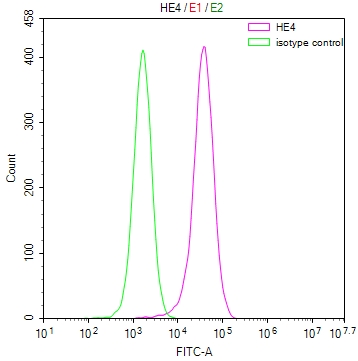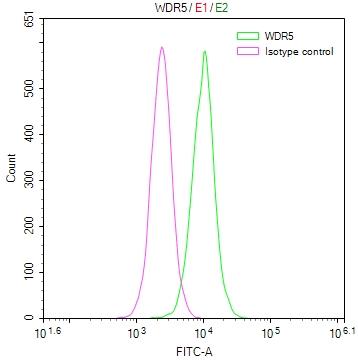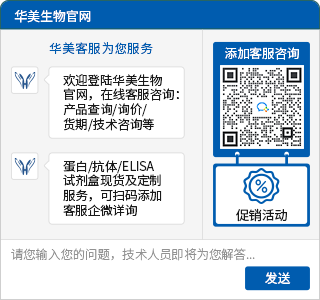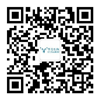TRAF4 Antibody
产品详情
-
产品名称:Rabbit anti-Homo sapiens (Human) TRAF4 Polyclonal antibody
-
Uniprot No.:Q9BUZ4
-
基因名:
-
别名:CART 1 antibody; CART1 antibody; cysteine rich domain associated with ring and TRAF domain antibody; Cysteine rich domain associated with RING and Traf domains protein 1 antibody; Cysteine-rich domain associated with RING and Traf domains protein 1 antibody; Malignant 62 antibody; Metastatic lymph node gene 62 protein antibody; MLN 62 antibody; MLN62 antibody; RING finger protein 83 antibody; RNF 83 antibody; RNF83 antibody; TNF receptor associated factor 4 antibody; TNF receptor-associated factor 4 antibody; TRAF 4 antibody; Traf4 antibody; TRAF4_HUMAN antibody; tumor necrosis receptor-associated factor 4A antibody
-
宿主:Rabbit
-
反应种属:Human
-
免疫原:Recombinant Human TNF receptor-associated factor 4 protein (251-470AA)
-
免疫原种属:Homo sapiens (Human)
-
标记方式:Non-conjugated
-
克隆类型:Polyclonal
-
抗体亚型:IgG
-
纯化方式:Antigen Affinity Purified
-
浓度:It differs from different batches. Please contact us to confirm it.
-
保存缓冲液:PBS with 0.02% sodium azide, 50% glycerol, pH7.3.
-
产品提供形式:Liquid
-
应用范围:ELISA, IHC
-
推荐稀释比:
Application Recommended Dilution IHC 1:20-1:200 -
Protocols:
-
储存条件:Upon receipt, store at -20°C or -80°C. Avoid repeated freeze.
-
货期:Basically, we can dispatch the products out in 1-3 working days after receiving your orders. Delivery time maybe differs from different purchasing way or location, please kindly consult your local distributors for specific delivery time.
相关产品
靶点详情
-
功能:Adapter protein with E3 ligase activity that is involved in many diverse biological processes including cell proliferation, migration, differentiation, DNA repair, platelet activation or apoptosis. Promotes EGFR-mediated signaling by facilitating the dimerization of EGFR and downstream AKT activation thereby promoting cell proliferation. Ubiquitinates SMURF2 through 'Lys-48'-linked ubiquitin chain leading to SMURF2 degradation through the proteasome and subsequently osteogenic differentiation. Promotes 'Lys-63'-mediated ubiquitination of CHK1 which in turn activates cell cycle arr...显示更多
-
基因功能参考文献:
- circRNA MTO1 (hsa-circRNA-007874) interacted with TRAF4, and sequester it from activating Eg5 translation, thereby inhibiting the Eg5 protein level inhibiting Eg5-mediated cell viability and promoting monastrol chemosensitivity in breast cancer cells. PMID: 30015883
- It was identified that a high level of TRAF4 facilitated the invasiveness of intrahepatic cholangiocarcinoma (ICC)cells via the activation of AKT signaling. The overexpression of TRAF4 may be a prognostic biomarker and candidate therapeutic target for patients with ICC. PMID: 29749456
- expression of miR-519d-3p is down-regulated in prostate cancer cells. Overexpression of miR-519d-3p can inhibit the proliferation of prostate cancer cells. The possible mechanism is that miR-519d-3p inhibits the expression of TRAF4. PMID: 29595452
- TRAF4 knockdown significantly inhibited proliferation, invasion and metastasis in the xenograft nude mouse model, possibly involving in the interaction with RSK4. PMID: 29684350
- Study demonstrated that TRAF4 was involved in promoting HCC cell migration and invasion. The process was induced by the EMT through activation of the PI3K/Akt signaling pathway. PMID: 28256185
- increased TRAF4 expression in ankylosing spondylitis mesenchymal stem cells impaired LPS-induced autophagy, potentially by inhibiting the phosphorylation of Beclin-1. PMID: 28604663
- TRAF4 expression is higher in mastocytosis patients with food hypersensitivity in their medical history, while B3GAT1 expression is lower in mastocytosis patients with insect venom allergy in history PMID: 27086366
- Determined the crystal structure of TRAF domain of TRAF4 (residues 292-466) at 2.60 A resolution by X-ray crystallography method. The trimericly assembled TRAF4 resembles a mushroom shape, containing a super helical "stalk" which is made of three right-handed intertwined alpha helixes and a C-terminal "cap", which is divided at residue L302 as a boundary. PMID: 23982741
- TRAF4 may promote oral squamous carcinoma cell growth, invasion and migration by Wnt/beta-catenin pathway. PMID: 26617938
- There was a significant positive correlation between TRAF2 and TRAF4 expression levels in malignant pleural effusion cells PMID: 26331901
- The TRAF4-ERK5 is a dominant pathway in human skin squamous cell carcinoma. PMID: 26347473
- Data showed that TRAF4 was highly expressed in non-small cell lung cancer (NSCLC) cells, and miR-370 overexpression significantly inhibited its expression. These results suggest that TRAF4 serves as an oncogene in NSCLC. PMID: 25976502
- these results suggest that TRAF4 promoted colon cancer cell growth and invasion PMID: 25973026
- Expression of tumor necrosis factor receptor-assicated factor 4 correlates with expression of Girdin and promotes nuclear translocation of Girdin in breast cancer PMID: 25591657
- p70s6k/S6 signaling pathway played an important role in the promoting function of TRAF4 on cell proliferation. This work suggests a new direction for understanding the oncogenic function of TRAF4 in breast cancer. PMID: 25738361
- Recent data implicates TRAF4 in carcinogenesis. The molecular mechanism addressing TRAF4 to tight junctions involves lipid binding by the TRAF domain. Review. PMID: 25840457
- TRAF4 upregulated PRMT5 expression, which occurred predominantly in the nucleus, on which TRAF4 promotion of cell proliferation in breast cancer is mainly dependent. PMID: 25704480
- Data indicate that TRAF4 is specifically overexpressed in human breast cancer cells and plays an important role in tumorigenesis of breast cancer through direct interaction and activation of Akt. PMID: 24993240
- Results identified beta-catenin as a TRAF4-binding protein, TRF4 enhanced expression of beta-catenin, and mediated its translocation from the cytoplasm to the nucleus, thereby facilitating activation of the Wnt signaling pathway in breast cancer. PMID: 24990246
- promotes tumorigenesis in osteosarcoma cell lines via Akt signaling PMID: 25700355
- review highlights TGF-beta-induced SMAD-dependent signaling and non-SMAD signaling as the major pathways regulated by TRAF4 involved in breast cancer metastasis PMID: 25249198
- Data indicate that tumor necrosis factor (TNF) receptor-associated factor 4 (TRAF4) regulated osteosarcoma cell growth in vitro and in vivo, suggesting a candidate molecular target for osteosarcoma prevention and therapy. PMID: 25270078
- As a first step towards elucidating the molecular mechanisms of the TRAF4-mediated signalling pathway, the first crystal structure of the human TRAF4 TRAF domain with a coiled-coil domain is reported at 2.3 A resolution. PMID: 24419373
- possesses a novel phosphoinositide (PIP)-binding domain crucial for its recruitment to tight junctions PMID: 24311986
- our results suggest that the tumor suppressor microRNA, miR-29a, is one of the regulators of expression in metastatic prostate cancer. PMID: 24100420
- TRAF4 attenuation impaired glucose metabolism by inhibiting expression of Glut1 and HK2 mediated by the Akt pathway. PMID: 24154876
- TRAF4 regulates the TGF-beta pathway and is a key determinant in breast cancer pathogenesis. PMID: 23973329
- The short form of the TRAF4 TRAF domain was purified to homogeneity and crystallized. PMID: 23908043
- Data indicate that Smad ubiquitin regulatory factor Smurf1 regulates cell migration through ubiquitination of tumor necrosis factor receptor-associated factor 4 (TRAF4). PMID: 23760265
- Data iindicate that TRAF2 affects the localization and function of TRAF4 in breast cancer cell lines. PMID: 23743189
- The results indicate that TRAF4 and TRAF6 are overexpressed in IBD. TRAF4 and TRAF6 play different roles in the pathogenesis of IBD PMID: 23431243
- Primary cells from TRAF4-deficient mice display markedly enhanced IL-17-activated signaling pathways and induction of chemokine mRNA/ PMID: 22649194
- Like IKKalpha, TRAF4 is atypical within its family because it is the only TRAF family member to negatively regulate innate immune signaling. IKKalpha's phosphorylation of serine-426 on TRAF4 was required for this negative regulation. PMID: 22547678
- Identify TRAF4 as a novel binding partner for GPIb-IX-V and GPVI in human platelets. PMID: 20946164
- A novel motif in the Crohn's disease susceptibility protein, NOD2, allows TRAF4 to down-regulate innate immune responses. PMID: 21097508
- Involvement in oxidative activation of c-Jun N-terminal kinase PMID: 12023963
- activation of the NF-kappaB pathway is involved in up-regulation of TRAF4 in T-cells PMID: 12354113
- TRAF4 may play a role in p53-mediated proapoptotic signaling in the response to cellular stress PMID: 12788948
- TNF-receptor activation leads to activation of the p70S6K; TRAF4 is a mediator in this TNF-induced signaling pathway; and TRAF4 inhibits Fas-induced apoptosis PMID: 12801526
- MEKK4 is the MAPK kinase kinase for TRAF4 regulation of the JNK pathway PMID: 16157600
- TRAF4 gene amplification is one of the mechanisms responsible for TRAF4 protein overexpression in human cancers PMID: 16799635
- The nuclear expression of TRAF4 in breast carcinoma is suppressed, and correlated to the invasive ability of breast cancer. PMID: 17927880
- Disrupting endogenous p63 expression downregulated TRAF4 mRNA & protein in SCCHN cells. Endogenous p63 bound the TRAF4 promoter in vivo. TAp63 is the most active transactivator of TRAF4. TRAF4 is associated with differentiation of SCCHN cells. PMID: 18087216
- Apart from being a well replicated risk factor for RA, TRAF1/C5 also appears to be a risk factor for the rheumatoid factor-negative polyarthritis subtype of JIA and seems to be associated with subtypes of JIA characterised by a polyarticular course. PMID: 18593758
- TRAF4 is one of the emerging TJ-dependent signaling pathways that responds to cell polarity by regulating the cell proliferation/differentiation balance, and subsequently epithelium homeostasis. PMID: 18953416
收起更多
-
亚细胞定位:Cytoplasm. Nucleus. Cytoplasm, perinuclear region. Cell junction, tight junction. Cell membrane; Peripheral membrane protein; Cytoplasmic side. Cytoplasm, cytoskeleton.
-
蛋白家族:TNF receptor-associated factor family, B subfamily
-
组织特异性:Expressed in epithelial cells of thymus, dendritic cells of lymph node, and in the basal cell layer of epithelia such as epidermis, nasopharynx, respiratory tract, salivary gland, and esophagus.
-
数据库链接:
HGNC: 12034
OMIM: 602464
KEGG: hsa:9618
STRING: 9606.ENSP00000262395
UniGene: Hs.8375





